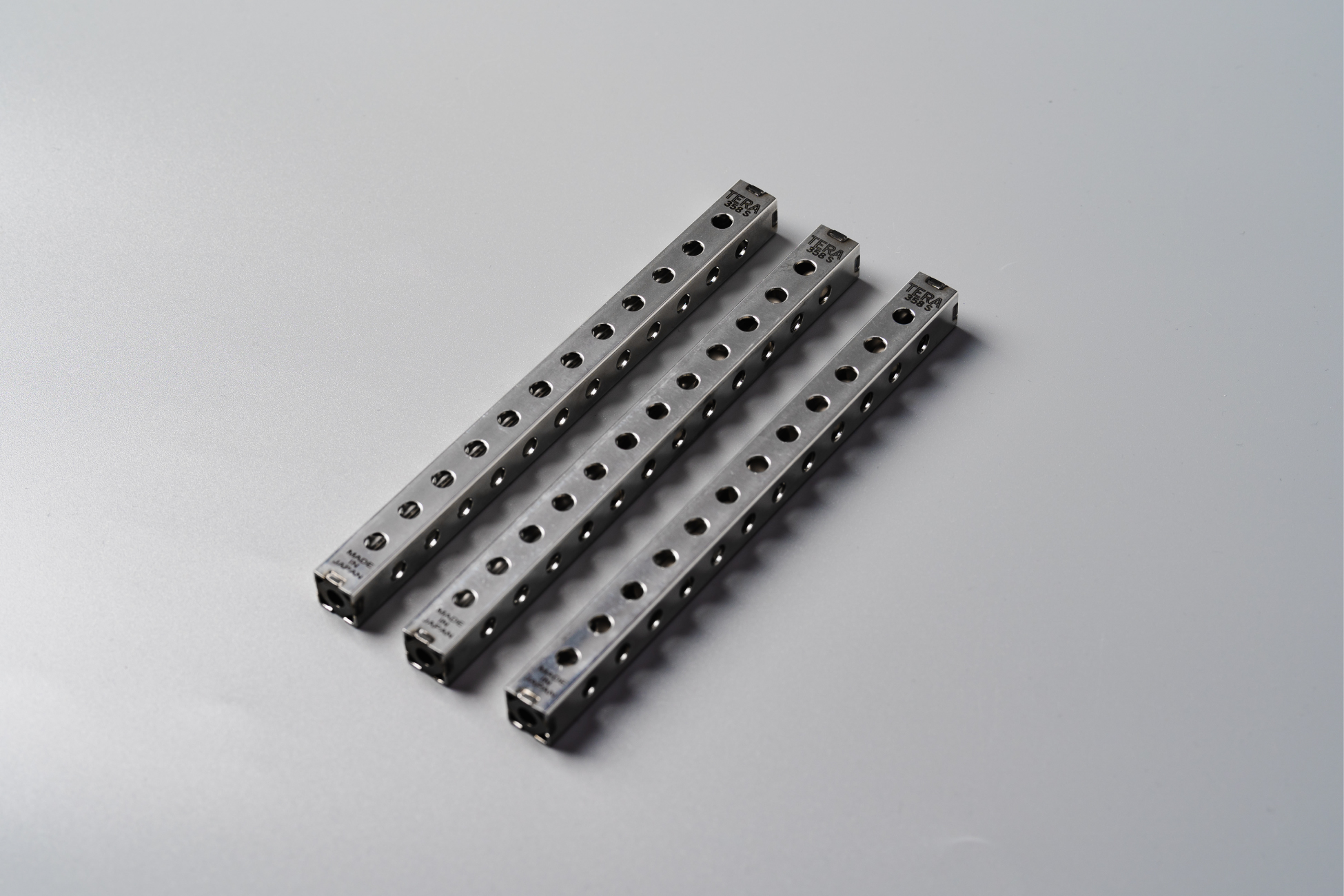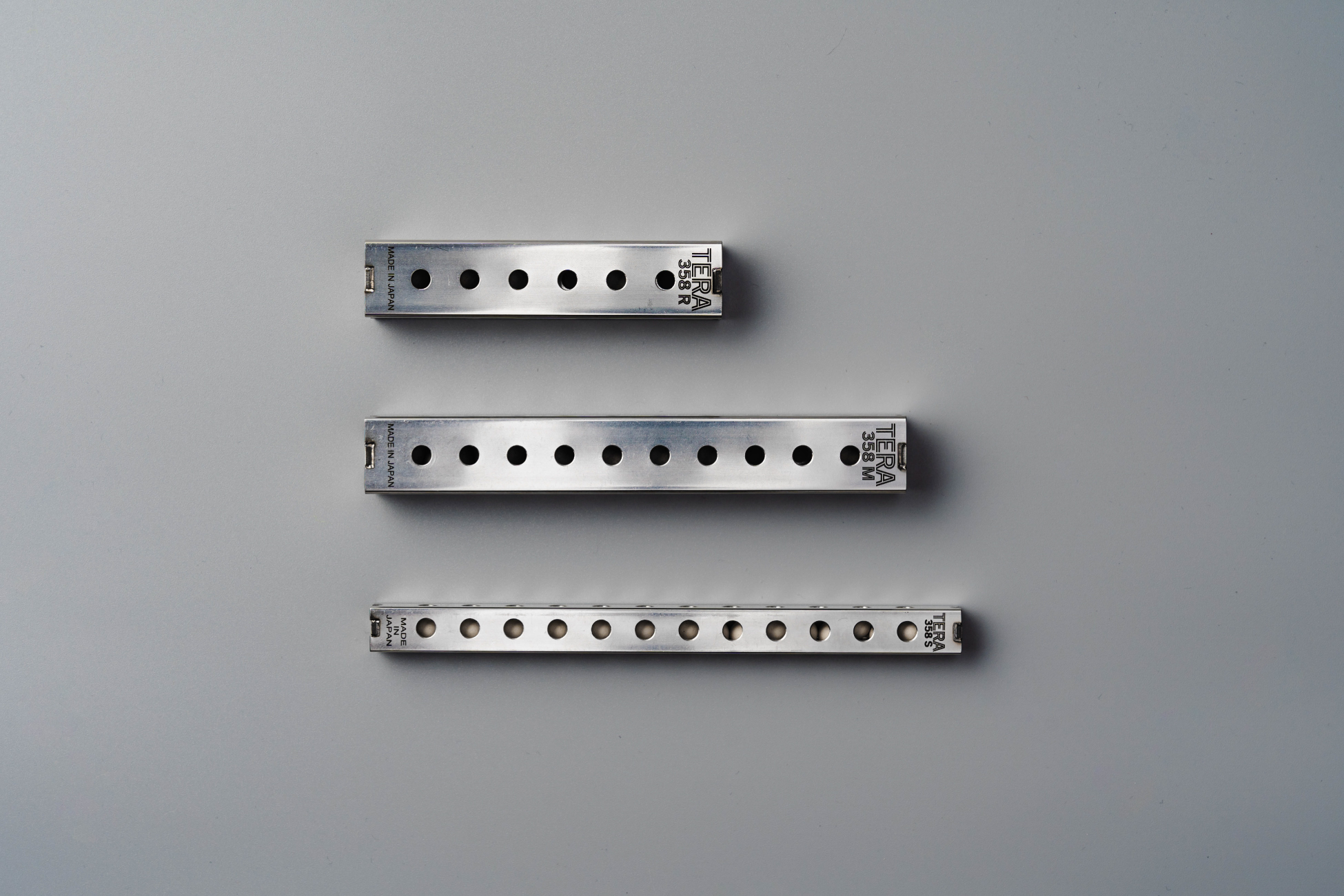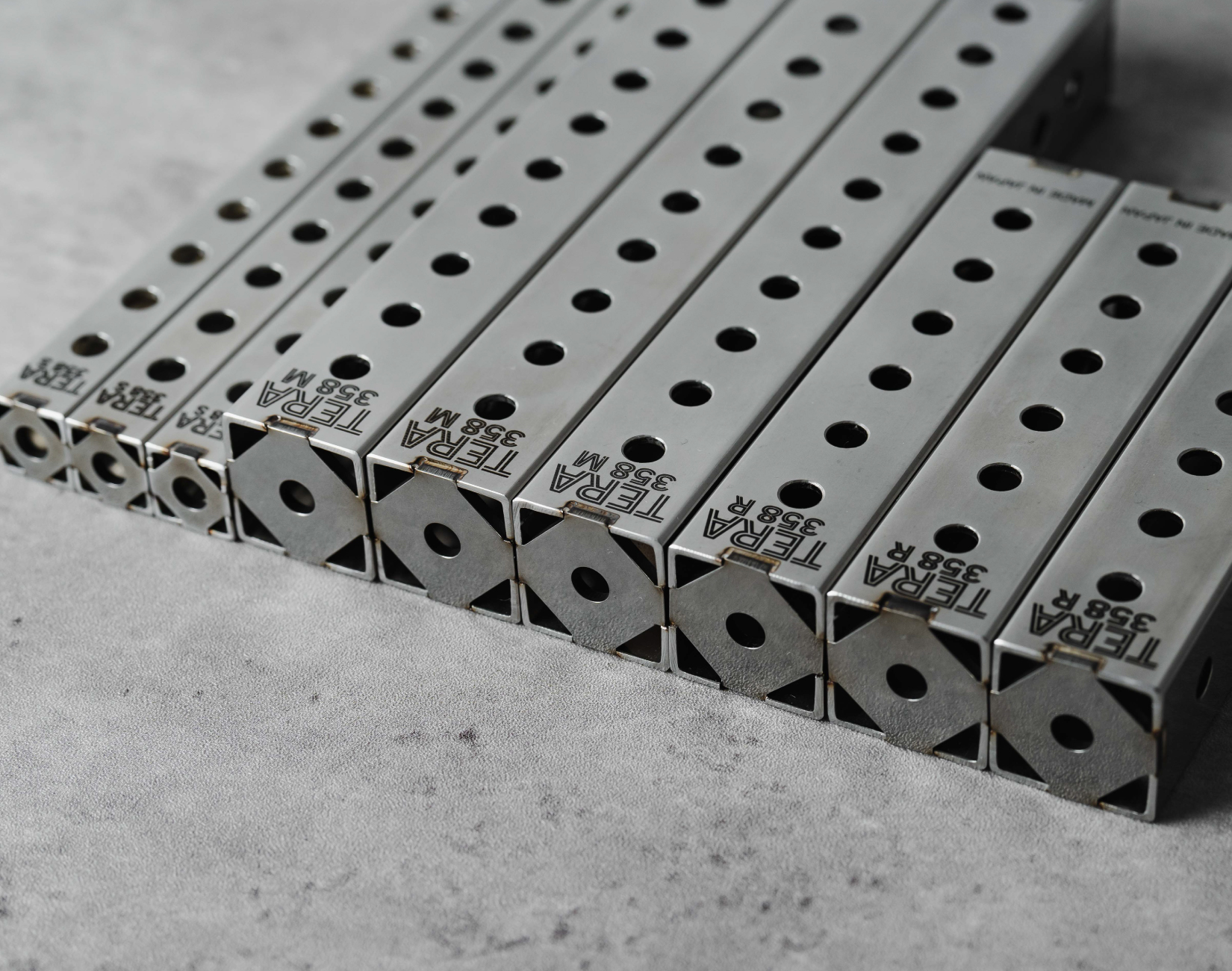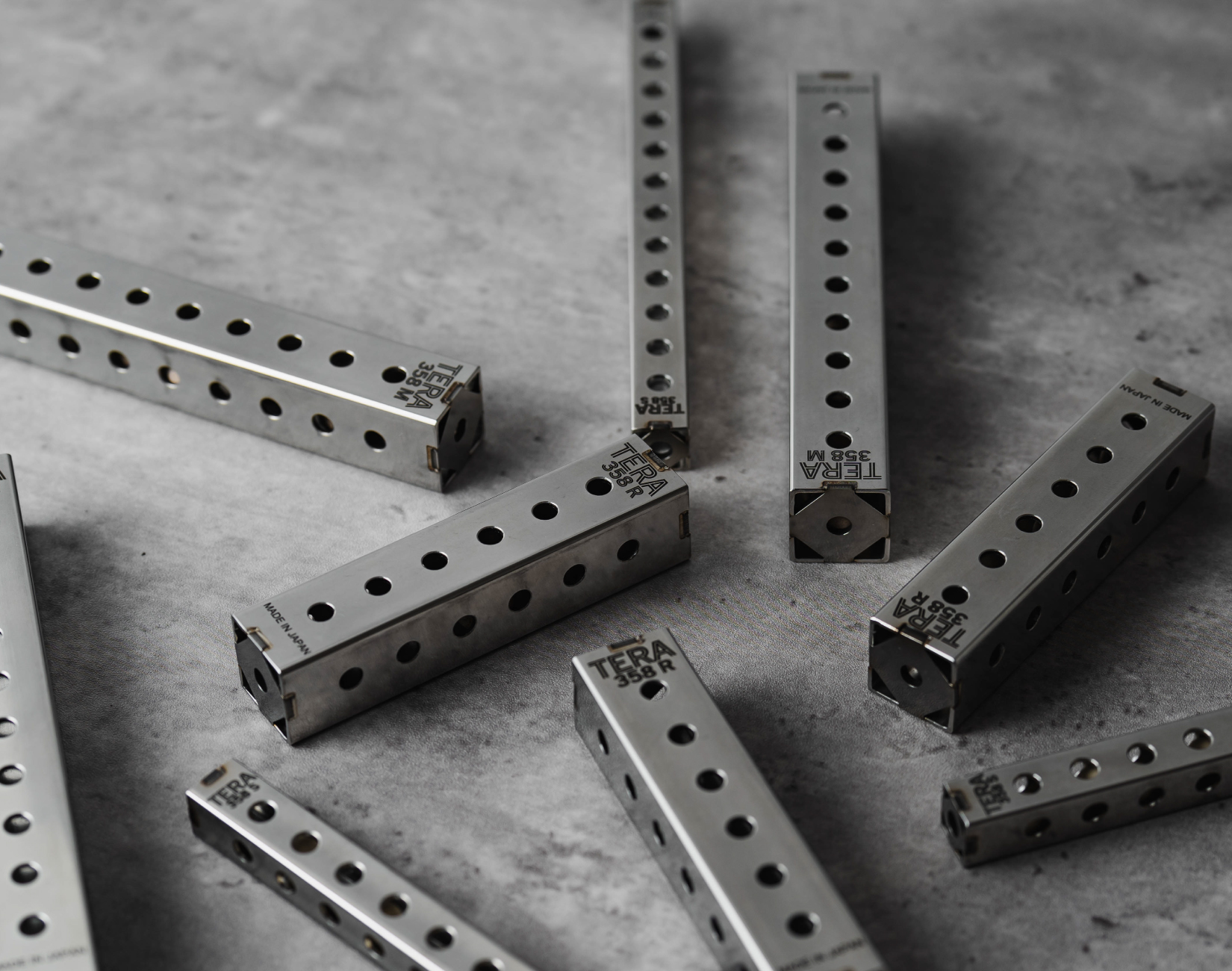overview
The strong “reduction” effect of the “negative ions” emitted from TERA 358 returns electrons (-) to positively biased (oxidized) oil molecules, and the protons (+) and electrons (-) of the oil molecules by maintaining the balance and stabilizing (reducing) the oxidation of oil.
In addition, positively biased oils have the property of molecules tending to gather together, and this is accelerated by polymerization reactions, especially due to the influence of heat, resulting in so-called oil stickiness (increase in viscosity). By applying terahertz waves to this reaction, the bonds between oil molecules are finely separated, reducing the viscosity of the oil and reducing it to a smooth oil. Smaller oil molecules are more thermally efficient and help evaporate water.
In addition, the action of far infrared rays makes it easier for heat to enter deep-fried foods, so it is possible to shorten frying time (improving work efficiency) or lowering the oil temperature setting by 5 to 10 degrees Celsius (frying time remains the same). , making it possible to save on electricity and gas bills.
function
1.Economic effects of suppressing oil deterioration
Its “reducing” action slows down the progress of oil deterioration (oxidation) and provides economic benefits by reducing the frequency of oil waste (number of oil changes).
2.Economic effect of reduced oil usage
By making the oil smoother (lowering the viscosity of the oil), it absorbs and reduces the amount of oil that clings to fried foods. More oil than usual leaves the fried food and returns to the fryer, reducing the amount of oil lost, resulting in an economical effect by reducing the amount of oil added.
3.Effects that contribute to increased sales through differentiation
Most of the calories in fried foods come from the oil that is absorbed and clings to the fried foods. The oil becomes smoother and more oil is removed from the fried food,making it possible to provide healthy fried food with fewer calories. In addition, as the amount of oil contained in fried foods is reduced, the flavor of the ingredients themselves increases, enabling a “differentiation strategy” for delicious and healthy fried foods, which contributes to sales. Furthermore, by reducing the amount of oil contained in fried foods, they become crispier and easier to eat, making it easier to eat larger portions, which in turn contributes to increased sales.
4.Effect of providing a comfortable working environment by reducing oil odor
Its oxidation-reduction effect suppresses oil oxidation, which is the source of oily odor, and greatly reduces oily odor not only in fried foods but also in kitchens and other workplaces, providing a comfortable working environment.
5.Work load reduction effect
By slowing down the progress of oil deterioration (oxidation), you can reduce the frequency of waste oil (replacement) work and reduce the workload accordingly. Other effects include suppressing oil splatter caused by moisture and reducing the risk of burns from splattered oil.
Progress of oil deterioration and effects of TERA358
The animation moves by scrolling down.

































Clean oil and oil molecule state
Heating the oil causes oxidation and hydrolysis.
Oil molecules bond together, increasing the viscosity of the oil
Install TERA when the oil is degraded
Suppresses oil oxidation with strong “reducing” action
Oil molecules are originally stable with a balance of protons (+) and electrons (-).
When heated, the oil surface absorbs oxygen from the air, and when fried ingredients give a stimulus such as releasing moisture into the oil, the electrons (-) in the oil molecules are released. Oxidation and hydrolysis proceed.
In addition, the oil molecules that lose electrons (-) and become unbalanced become positive, and as a result of heating polymerization, the oil molecules bond together (increase in viscosity), and the heat exchange rate decreases, resulting in a rise in the quality of the product. (deterioration in quality) and inefficiency in cooking temperature and time. (When oil is hydrolyzed by moisture, symptoms such as oily smoke, foaming, and bad smells appear.)
This imbalance between protons (+) and electrons (-) in oil molecules is the main cause of deterioration of edible oil. Insert TERA358 here.
The powerful “reducing” action of the released “negative ions” returns electrons (-) to positively biased (oxidized) oil molecules, and balances the protons (+) and electrons (-) of the oil molecules. It suppresses oil oxidation by maintaining and stabilizing (reducing) the oil.


Oil molecules are originally stable with a balance of protons (+) and electrons (-).
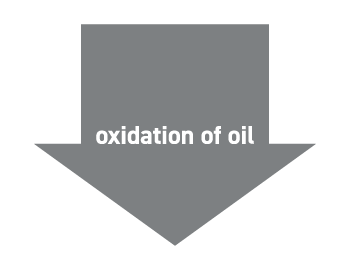


When heated, the oil surface absorbs oxygen from the air, and when fried ingredients give a stimulus such as releasing moisture into the oil, the electrons (-) in the oil molecules are released. Oxidation and hydrolysis proceed.
In addition, the oil molecules that lose electrons (-) and become unbalanced become positive, and as a result of heating polymerization, the oil molecules bond together (increase in viscosity), and the heat exchange rate decreases, resulting in a rise in the quality of the product. (deterioration in quality) and inefficiency in cooking temperature and time. (When oil is hydrolyzed by moisture, symptoms such as oily smoke, foaming, and bad smells appear.)



The powerful “reducing” action of the released “negative ions” returns electrons (-) to positively biased (oxidized) oil molecules, and balances the protons (+) and electrons (-) of the oil molecules. It suppresses oil oxidation by maintaining and stabilizing (reducing) the oil.
size
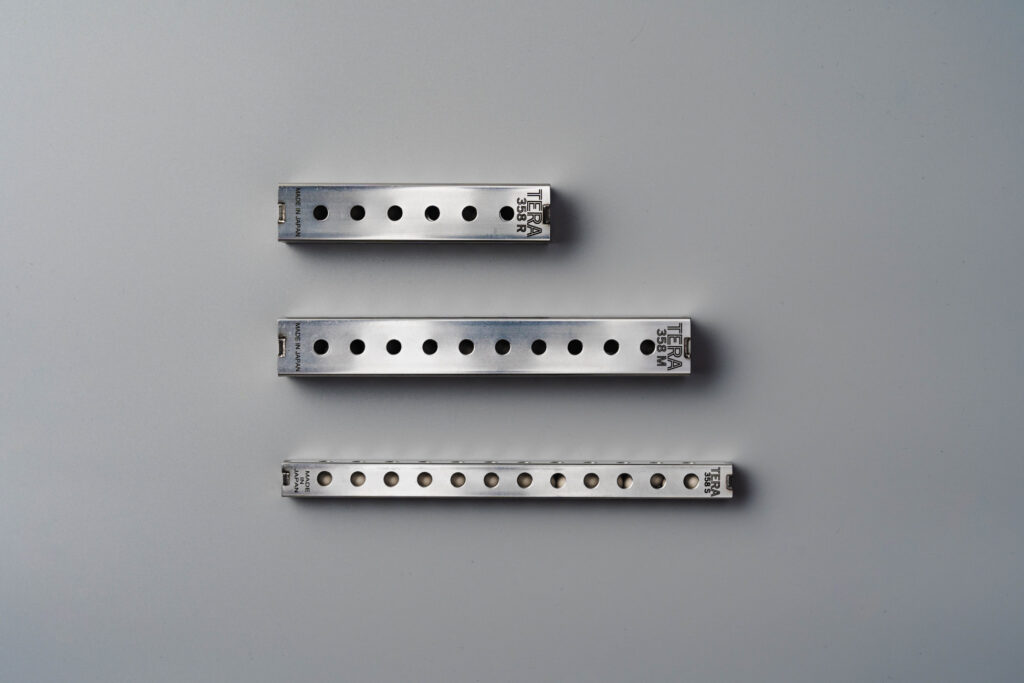
〜30L
〜50L
〜15L
※We can also provide special sizes for ultra-large fryers for food factories.
beneficial effects
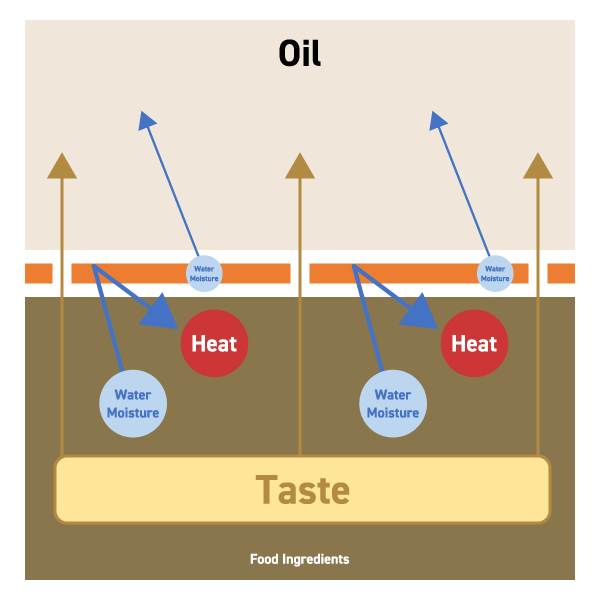
Generally, when fried foods are placed in heated oil, the water on
the surface of fried foods boils, explodes, and evaporates.
The explosion creates numerous holes in the surface of the fried food,
and at the same time, many of the flavor components of the ingredients
inside are lost through the holes, which tends to result in dry fried food.
In addition, a large amount of oil seeps into the ingredients through the
holes, and if the oil has been used for a long time and has become
highly viscous, more oil will stick to the surface of the fried food,
resulting in fried food that feels sticky.
*The cause of oily fried foods.
Due to the relationship between water and oil, the moisture (steam) in
the ingredients that cannot escape is unable to penetrate the oil layer
and boil, so it moves towards the colder parts of the ingredients and
condenses. When 1g of water vapor condenses, it has enough thermal
energy (latent heat of vaporization) to heat water to 540℃, and this
thermal energy is used to cook ingredients.
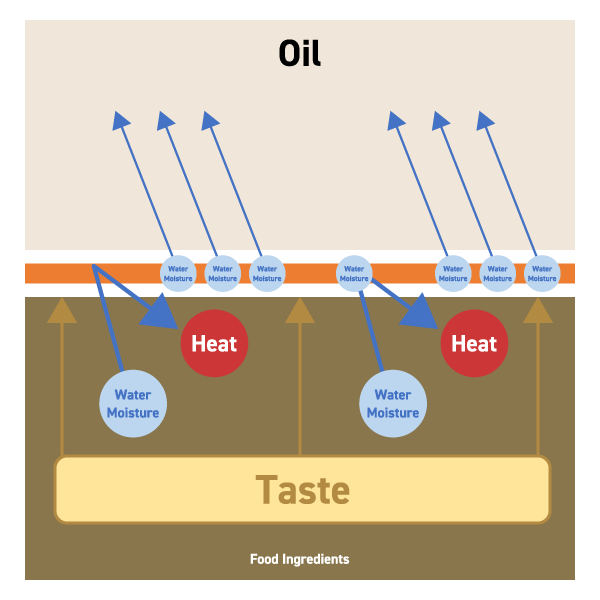
When “TERA358” is placed in an oil tank and fried food is also placed in
high-temperature oil, the weak vibrations of the terahertz waves cause the
clusters of water molecules to become smaller, thereby eliminating holes
formed by boiling, explosion, and evaporation on the surface of the fried food.
The smaller size prevents oil from seeping into the ingredients, and by forming
a vibrating membrane on the surface of fried foods, it traps a lot of moisture
and flavor in the ingredients, making it possible to provide fried foods with
juicy fillings.
Furthermore, when the oil is shaken with slight vibrations, the oil molecules
become smaller, which helps evaporate water on the surface, making it
possible to fry crispy fried foods.
The moisture (steam) that is trapped in the ingredients in a larger amount
than usual moves toward the low-temperature parts of the ingredients and
condenses.When 1g of water vapor condenses, it generates enough thermal
energy (evaporation) to heat water to 540℃. It has latent heat), and the
increased heat energy cooks the ingredients, and the addition of a special
far-infrared effect allows the ingredients to be heated even faster, reducing
frying time.
In addition, it suppresses the increase in oil viscosity, reduces oil seepage into
ingredients, and the smooth oil significantly reduces oil clinging to the surface
of fried foods, enhancing the flavor of ingredients and making healthy a fried
food with less oil content.



